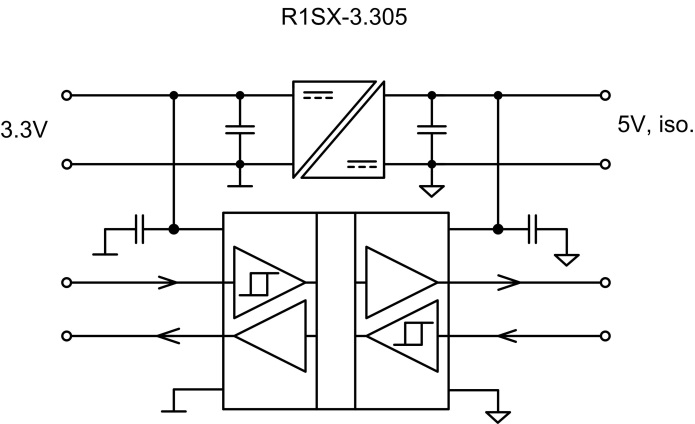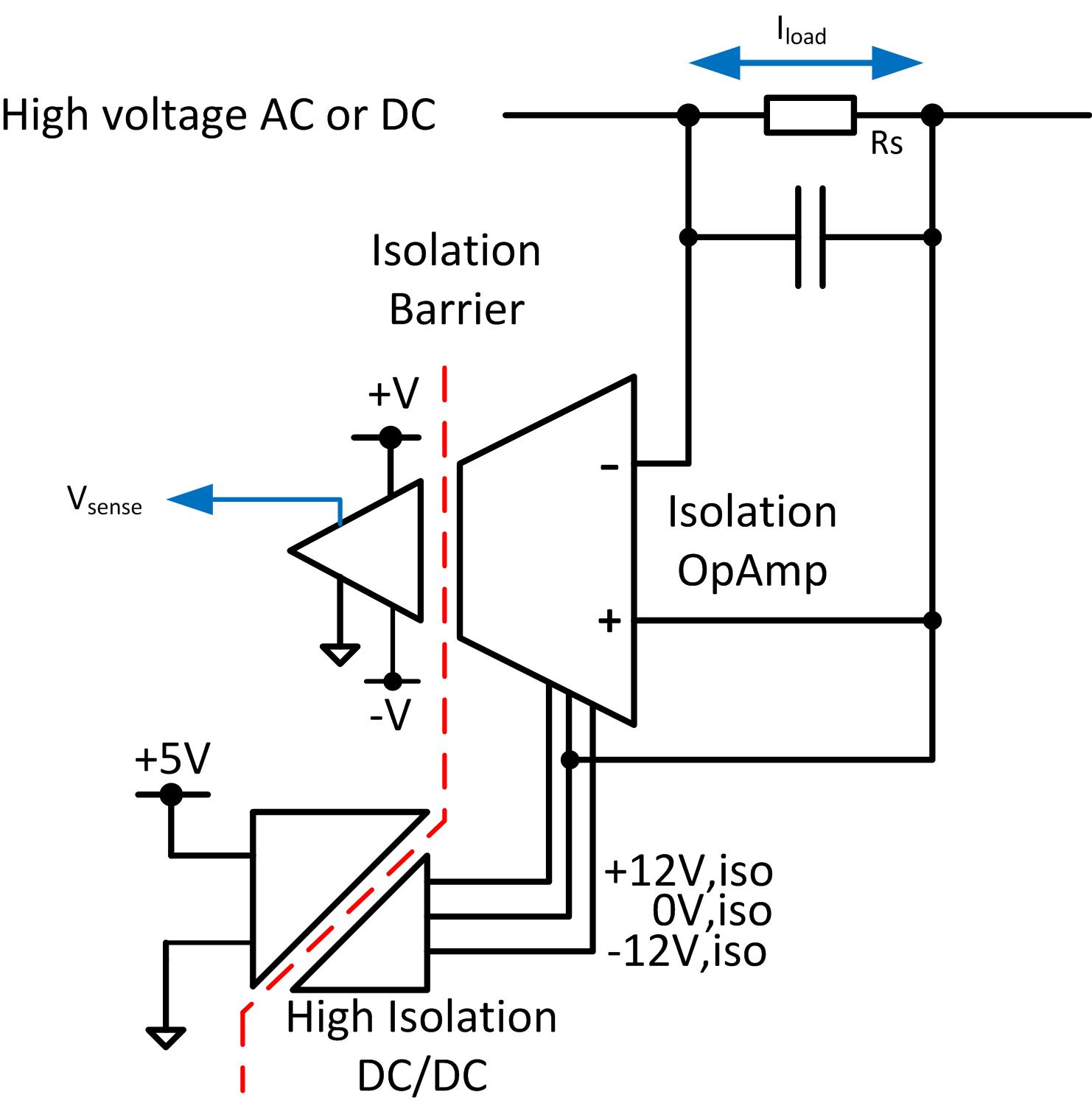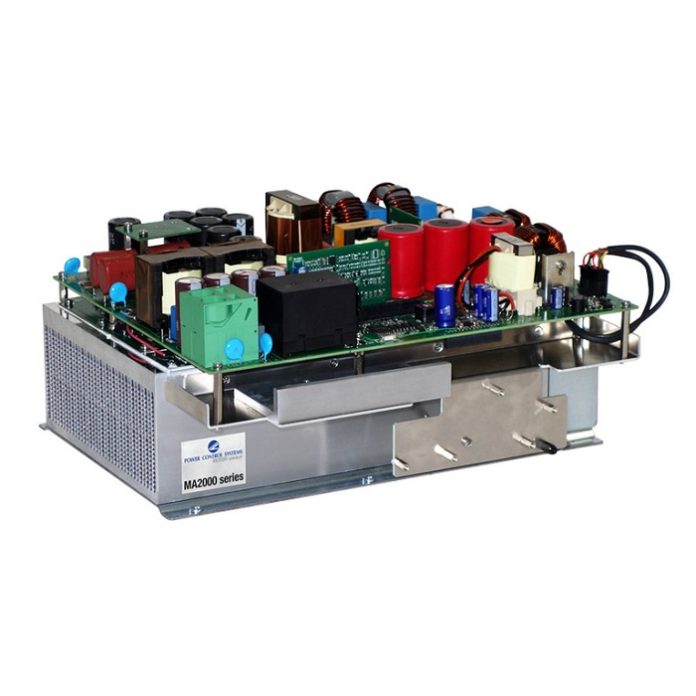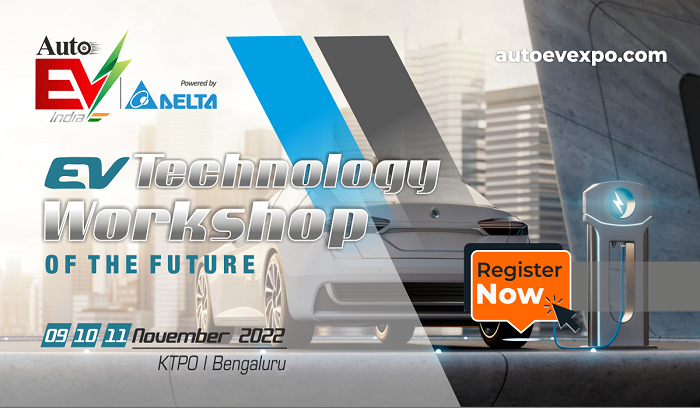Often, measurement isolation from the ground is required because the part being tested or measured is, or can be, at a different ground reference voltage from the recording or analysing equipment. When the testing and measurement equipment is line-powered, an AC/DC converter provides isolation and may be followed by a DC/DC converter to provide galvanic isolation between separate power rails for inputs of multi-channel or multi-parameter T+M equipment. This is to avoid cross-talk or interference between the signal inputs. DC/DCs may therefore be necessary even if the measurement unit itself is battery-powered.Analog input test and measurement sensors commonly require dual rail supplies to power the operational or precision signal amplifiers. The amplified and conditioned output is typically fed into Analog-to-Digital converters and the data stream is then isolated using Digital Isolators. ADCs and DIs require independent 3.3V or 5V rails dropped down from the main 12V or 24V supply rail.
Finally, digital bus isolators (USB, CAN, GPIB, etc.) are often essential to avoid ground loops, for safety, or to ensure single fault tolerance in the T+M system.
What kind of AC/DC converters are required for T&M systems?
What kind of DC/DC converters are required for T&M systems?
- High isolation
- Bus power rail isolators
- Low noise
- Specialist converters with very low input current
- The high input voltage, low output voltage
- Single supply, dual output voltage
High isolation converters
RECOM offers very high isolation DC/DC converters in compact case sizes. Our exceptional RHV2/RHV3 series offers 20kVDC isolation (12.5kVAC/1 minute) in a SIP16 case for very high isolation power supply measurement technology in applications such as hard vacuum ion pumps, X-ray equipment, and high voltage dust filters.
Our REM series offers up to 10kVDC (5kVAC/1 minute) isolation and is certified to withstand continuous 230VAC across the isolation barrier. Output powers from 1W up to 30W are available. An example application is isolation for temperature measurement thermocouples that are attached to transformers, transistors, diodes, or capacitors that operate at mains voltages.
For testing and measurement applications that require functional isolation to avoid ground loops or interference in low voltage systems, the RKE series offers exceptional value-for-money with 3kV, 4kV or 6kV isolation options.
Bus power rail isolators

An isolated data bus transceiver requires isolated power for the serial communication bus, commonly provided by an isolated DC/DC converter placed across the isolation gap and powered from the input supply. Typical input and output voltage combinations are 3.3V to 3.3V, 5V to 5V or 3.3V to 5V.
Low noise converters
Many sensors deliver low-level outputs; a type K thermocouple has a thermoelectric voltage of just 1mV at 25°C for example. High-gain thermocouple amplifiers are susceptible to common mode noise, so need very quiet power supply rails. A typical unregulated isolated DC/DC converter will have 60-100mV p-p output ripple, which may interfere with some measurements. As a solution, RECOM offers post-regulated DC/DC converters in the same pinout as standard converters which combine the advantages of an isolated DC/DC converter with the voltage stability and low noise output of a linear regulator. For example, the RIZX-0505 offers a regulated 5V output with only 30mV p-p ripple. If this is still too high, a simple input and output filter can be used to reduce the output ripple to only 2mV p-p to create a very low noise (-68db) isolated supply.

The high input voltage, and low output voltage converters
Single supply/dual output converters
A DC/DC converter is often the simplest, cheapest, and most efficient way to generate a bipolar rail power supply. RECOM offers a very wide range of dual output (±5V, ±12V or ±15V) converters suitable for the power rails of operational amplifiers. Full load output power rating is as low as 250mW for very low power consumption designs up to 40W to supply large multi-channel systems.









